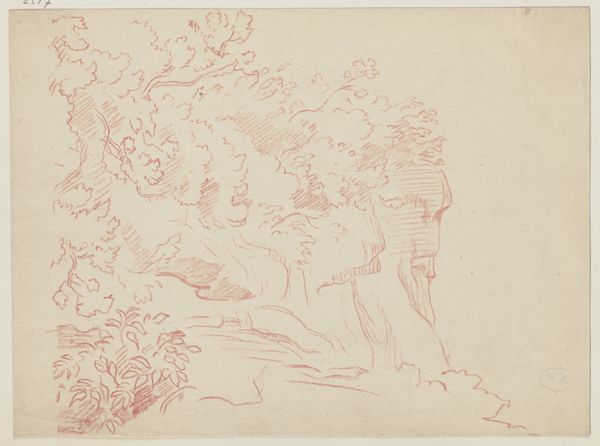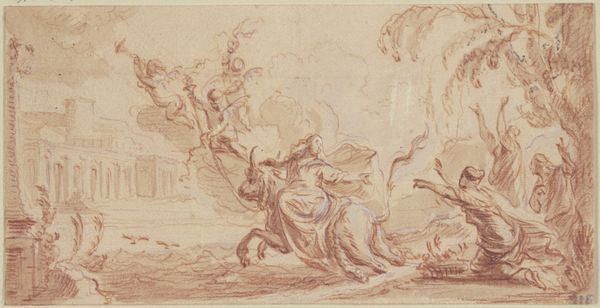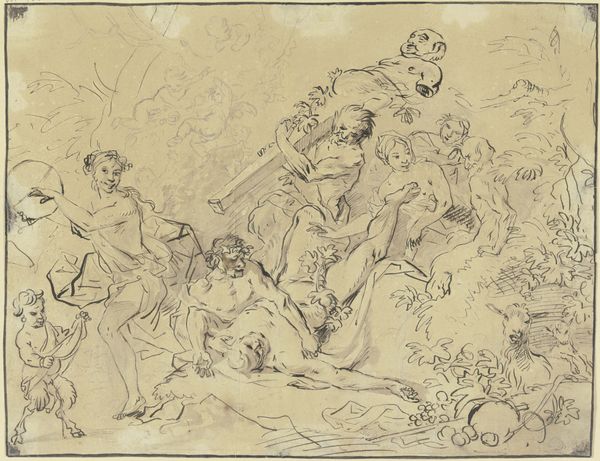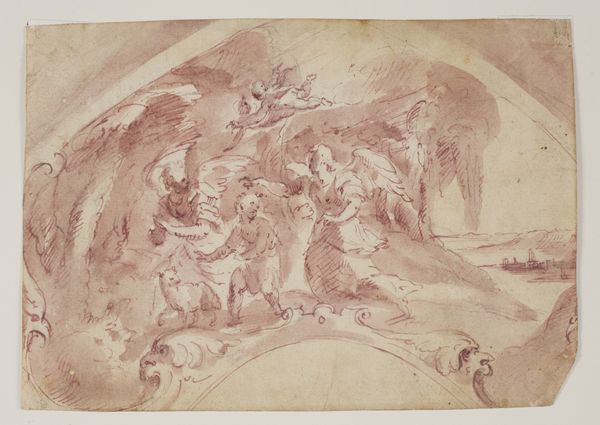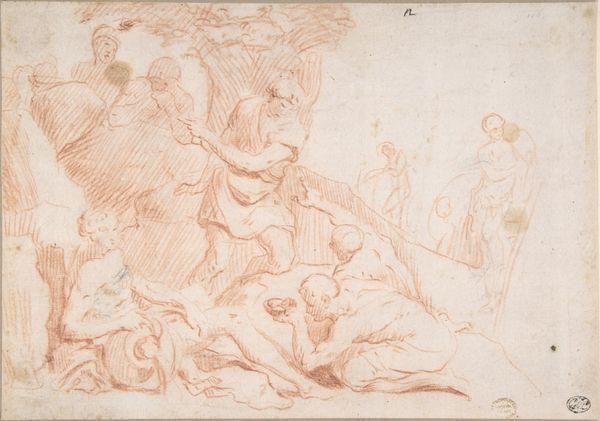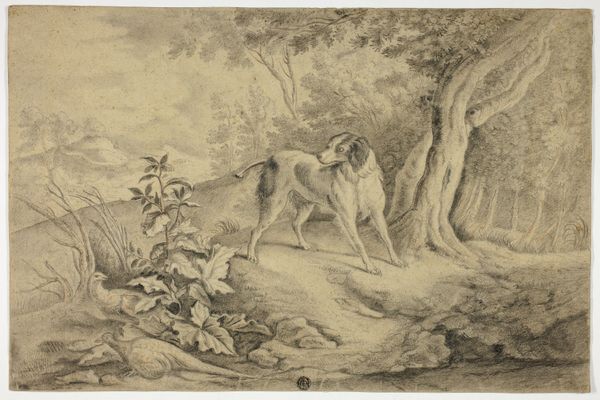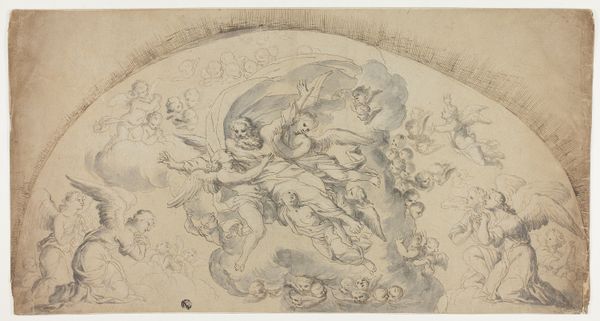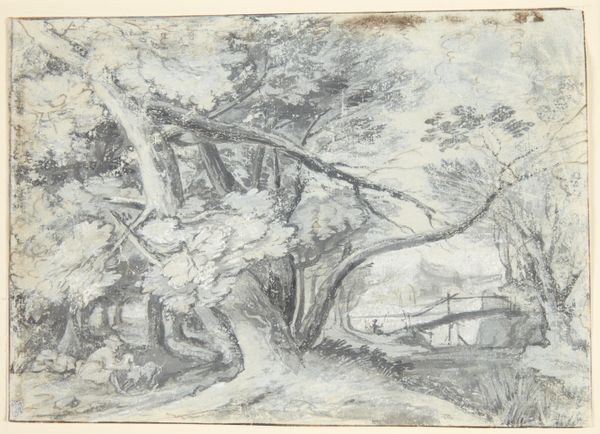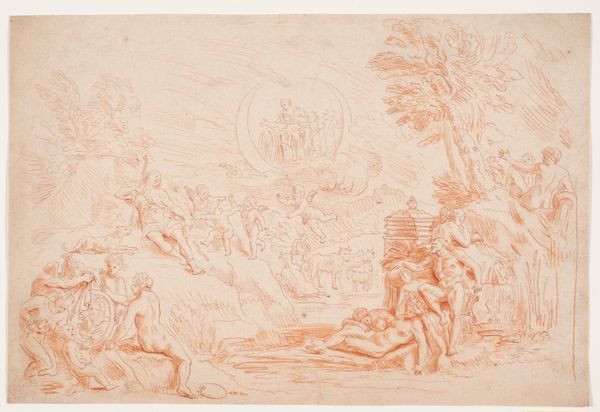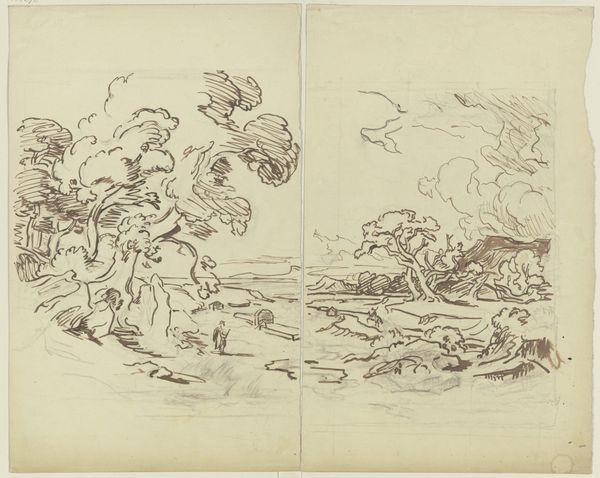
drawing, print
#
drawing
#
baroque
# print
#
landscape
#
figuration
#
history-painting
Dimensions: sheet: 9 7/16 x 13 3/16 in. (24 x 33.5 cm)
Copyright: Public Domain
Curator: This print captures a profound moment: Moses before the Burning Bush. Created in 1663 by Claude Mellan, it's a delicate engraving, currently residing here at the Metropolitan Museum. Editor: The sheer drama of it! The almost frantic energy in the lines… You immediately understand that this encounter will redefine Moses's destiny. Curator: Absolutely. The figure engulfed in flames, emanating from what appears to be an otherwise ordinary bush, clearly conveys a divine presence. Note how Mellan uses very fine lines to build up shading and volume, giving form to what is inherently formless – fire and divinity. The intensity is really carried through the contrast with the relative serenity of the flock on the left. Editor: It is that bush, sprouting a divine form, which compels me most, really making me think about nature's ability to carry cultural and spiritual symbols. Fire, of course, represents purification, revelation, and power—but here, enmeshed within the common form of a bush… it grounds these abstract ideas in a palpable image. Moses' posture, kneeling and in obvious supplication, reinforces that emotional weight. How interesting to pose them as near equals in terms of perspective; we, therefore, view both figures at an almost objective level. Curator: Precisely. And seeing how the socio-political climate of the 17th century encouraged a desire to portray intense emotion and dramatic light effects – as the Baroque style advanced – Mellan delivers that intensity even within the constraints of a print medium. The artifice, if you like, is removed from this work, allowing for this drama to truly breathe. Editor: Considering the politics and culture surrounding artists like Mellan, what choices might they feel forced to consider in a history painting such as this? Did such concerns, at that moment, influence the visual culture? Curator: Mellan was certainly mindful of patronage, religious sensibilities, and the prevailing artistic trends. Depicting Moses with such a mix of reverence and humility would be seen as acceptable to viewers during the era, which may be interpreted as an element of subtle promotion or cultural understanding. The success of images depended on this and much more. Editor: Indeed, this encounter has resonated through centuries; so very well rendered through Mellan's symbolic choices! I now leave with even deeper ideas to contemplate concerning history, religion and of course, this wonderful composition itself.
Comments
No comments
Be the first to comment and join the conversation on the ultimate creative platform.
